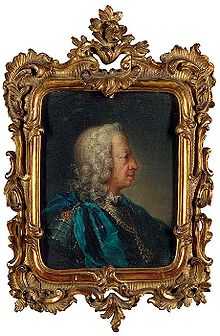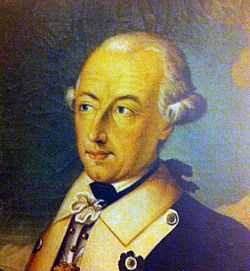Cittadella of Alessandria
| Cittadella Of Alessandria | |
|---|---|
| Cittadella Militare di Alessandria | |
| Alessandria | |
|
Aerial view of the Citadel. | |
|
Inside the fortress one of the Armory | |
 Cittadella Of Alessandria | |
| Coordinates | 44°55′15″N 8°36′25″E / 44.920714°N 8.607028°E |
| Site information | |
| Owner | Italian Public Property Agency |
| Controlled by | Italian Republic |
| Open to the public | Yes |
| Condition | Good |
| Site history | |
| Built | 1732 |
| Built by | Ignazio Bertola |
| In use | 18th century - 20th century |
| Materials |
Stone Bricks Earthwork Concrete |
| Battles/wars |
War of the Austrian Succession First Italian Campaign Risorgimento Second World War |
| Garrison information | |
| Garrison |
Austrian Army of Italy Army of Italy (France) |
| Occupants | Museum Historical Italian Military Uniforms (1848 - 1946) |
The Citadel of Alessandria is one of the best preserved European monuments within the permanent fortifications of the eighteenth century and one of the few still existing. It is the only European fortress still inserted in its original environment: there isn't a screen of homes that closes the view of the ramparts, or a heavy traffic road that surrounds the ditches.
For the first time in the history of Italy on March 10, 1821, the tricolore was raised on the bastions of the citadel by Colonel Ansaldi, during the Piedmont insurrection.[2][3] Since 2006, the Citadel (formerly National Monument) is included in the "Tentative List" for the application to the World Heritage UNESCO.
Location
The fortress lies across the river Tanaro in the north-west side of the city of Alessandria. The site is one of the lowest in the Piedmont region with an altitude of about 90 metres (300 ft) above sea-level.
History
Social, historical and geopolitical context

Since its foundation, 1168, the town of Alessandria was always meant to be a border town with a strategic-military vocation. From the 14th century has joined the Visconti of Milan against Monferrato and Asti, with the Sforza then in the 15th century, and consequently under the Spaniards rule after, throughout the 17th century.
The construction of the fortress began immediately after the signing of the Treaty of Utrecht in 1713. The treaty handed ownership of the Citadel from the Spaniards to the House of Savoy. A massive fortification project followed, during which much of Alessandria's town-planning were changed to bolster the fortress's defenses.
In order to meet the needs of defense of the new state of Savoy, it was decided to build a massive fortress designed to function as a barrier of military transits traveling along the "Road of Flanders", the ancient Spanish military road that connected the harbors of Genova, Savona and Finale Ligure with the Netherlands.
18th century
The project
The Citadel plan was commissioned by King Vittorio Amedeo II and effectively built, in 1732, by King Charles Emmanuel III. The project's architect was Ignazio Bertola. The fortress is a six-star hexagon shaped structure.
The Citadel was built entirely at the expense of the ancient quarter of Borgoglio (or Bergoglio) provoking strong urban revolution. It was completed in its main components in the forties of the 18th century while inside the fortified hexagon the buildings of the civilians were gradually demolished to make way for new military quarters and the inhabitants were forced to relocate, replaced by a garrison ever more numerous.
The result is an immense fortress which extends over 74 hectares (180 acres) whose the longer side is parallel to the axis of the river. The Citadel is a perfect example of modern fortress composed of six bastioned fronts supplied with cavalieri crossed by tunnels and casemates. The fortress is surrounded by a wide moat, in connection with the Tanaro river through flooding tunnels, scheduled to be flooded by the waters of the river, and protected by tenaglioni, ravelins, counterguards and ridottes.
The entrance is by a long stone bridge that leads to a large area surrounded by multi-storey buildings arranged along the axis of the ancient quarter, all protected by resistant embankments constructed between 1749 and 1831.
The War of the Austrian Succession
The Citadel was tested by fire the first time between 1745 and 1746 when it resisted the French-Spanish army for seven months, during the War of the Austrian Succession. The Citadel was still incomplete and not well armed.
First Italian Campaign
At the end of the First Italian Campaign, the Citadel is in the hands of the French: in July 1799 it was under siege by the Austro-Russian Army led by Aleksandr Vasilyevich Suvorov. After three days of bombing were inflicted serious damage to the fortified structures and the French were forced to surrender.
Gallery
-
%2C_Reggia_di_Venaria_(from_Castle_of_Racconigi).jpg)
Victor Amadeus II of Sardinia
-

Charles Emmanuel III of Sardinia
-

Ignazio Bertola, architect
See also
References
- ↑ 37 Infantry Regiment, 38 Infantry Regiment
- ↑ Giovanni Spadolini, preface to La Cittadella di Alessandria, una fortezza per il territorio dal settecento all'unità by Anna Marotta . SO.G.ED. 1991
- ↑ The tricolore was not the classic white-red-green of the Italian flag, but the one with the colors of the Carbonari, blue, red and black
Bibliography
- Anna Marotta, La Cittadella di Alessandria, una fortezza per il territorio dal settecento all'unità. SO.G.ED. 1991
External links
| Wikimedia Commons has media related to Cittadella of Alessandria. |
| ||||||
